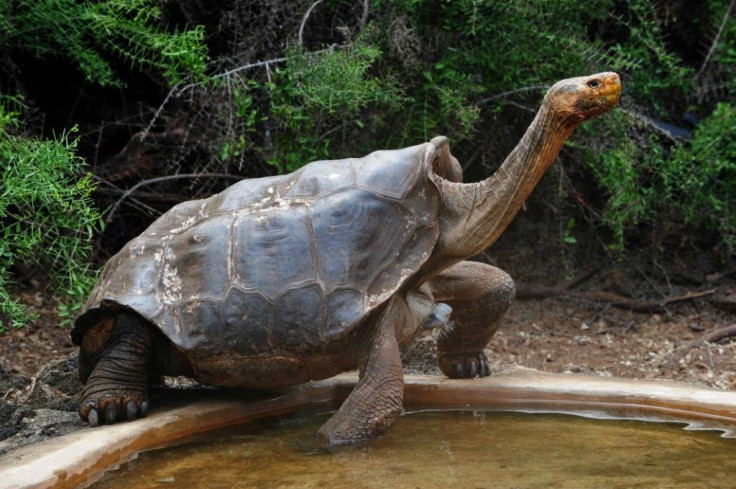Lost Species Found: 'Fantastic' Tortoise Thought Extinct Confirmed Alive [Photo]
KEY POINTS
- Researchers confirm that giant tortoise Fernanda is a member of a long-lost species
- Fernanda is the first of the species identified in over a century
- It is not clear if there are more of the species on Ecuador's Fernandina Island
The Fernandina Island Galápagos giant tortoise (Chelonoidis phantasticus) was long thought to be extinct. Researchers now confirm that a living tortoise found on the Ecuadorian island is a member of the species.
The Fernandina Island Galápagos giant tortoise, also known as the "fantastic giant tortoise," is known only from a single specimen that was collected way back in 1906, the authors noted in a paper published Thursday in Communications Biology.
"Despite being known previously from only one specimen, the Fernandina tortoise has been considered to represent a distinct taxon," they wrote.
Experts have long wondered if the species has continued to live on. However, even though there has been evidence that giant tortoises still live on Ecuador's Fernandina Island, it has remained "largely unexplored." This is because the island is an active volcano and "extensive" lava fields have blocked access to its interior.
Researchers discovered Fernanda, a single female tortoise named after the island, in 2019. Initially, there were doubts as to whether Fernanda was, indeed, a member of the long-lost species, a news release from Princeton University noted. This was because the reptile did not have the distinctive features found in the original 1906 specimen, though some thought it could be because it had stunted growth.
To find out, the researchers sequenced the tortoise's genome and compared it to the genome of the original specimen and that of 13 other Galapagos giant tortoise species. They found Fernanda and the original specimen were "from the same lineage and distinct from all others."
"We saw—honestly, to my surprise—that Fernanda was very similar to the one that they found on that island more than 100 years ago, and both of those were very different from all of the other islands' tortoises," study co-first author Stephen Gaughran, of Princeton University, said in the news release.
"These results imply the continued existence of lineage long considered extinct, with a current known population size of a single individual," the researchers wrote.
A tortoise from a Galápagos species long believed extinct has been found alive and now confirmed by #PrincetonU researchers to be a living member of the species.
— Princeton University (@Princeton) June 9, 2022
The tortoise, named Fernanda, is the first of her species identified in more than a century. https://t.co/ldRmyMNun5
The discovery also opens up many more questions, said study senior author Adalgisa Caccone, of Yale University. For instance, it is not clear whether there are still others like Fernanda on the island. Currently, Fernanda is at the Galápagos National Park Tortoise Center. Perhaps finding others may help kickstart a breeding program.
Whatever the case may be, the find is an "exciting discovery" that provides hope for the rediscovery of species that haven't been seen in a long time, said the researchers. Only recently, for instance, a rare crayfish that was thought to be extinct for the last 30 years was rediscovered in an Alabama cave. Groups such as Re:Wild have also been working to find the "most wanted" lost species, an effort that has already led to the rediscovery of quite a few of them.
"The future of the Fernandina tortoise species depends on the outcomes of further searches of this remote and difficult-to-explore island that could result in the discovery of yet more Fernandina tortoises," the researchers wrote.

© Copyright IBTimes 2025. All rights reserved.






















